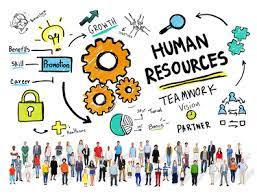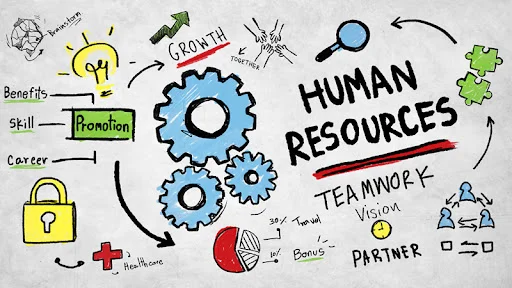Hello!
You probably prefer a particular brand of soap over another. And while you may have made a point-by-point comparison of different soaps before making a selection, it is just as likely you took one look at the brands and made your choice.
 For customers, brands are shortcuts. They communicate traits and values, and someone can look at a brand and decide on the spot if it has the attributes he wants and champions the values he does.
For customers, brands are shortcuts. They communicate traits and values, and someone can look at a brand and decide on the spot if it has the attributes he wants and champions the values he does.
For this reason, independent human resources professionals must have a brand, too. Invest in your brand as you would on HR courses. Build your brand so that people will know exactly who you are and what you stand for as a human resources practitioner.
Below are the basic steps to building a brand.
Define or Redefine Your Brand.
To start building your brand, first, you must know who you are. Sometimes, though, who you are may not exactly be who you want to be. In that case, you'd want to redefine your brand instead.
Who Are You Right Now?
To know who you are, define your story. Why are you in the human resources profession? What was your purpose? How about now; what is your goal?
 The following are some of the questions you need to answer:
The following are some of the questions you need to answer:
- What companies are hiring, consulting, or dealing with you?
- To what industries do these companies belong?
- Where are these companies located?
- What types of positions are you filling: entry-level, mid-level, senior-level, C-suite, or something else?
- What types of job seekers are hiring, consulting, or dealing with you?
- To what industries do these jobseekers belong?
- What are your clients saying about you?
- What service or services are you offering?
- What are your prices?
- Who are your competitors?
- Which human resources professionals are not your competitors, and why are they competition?
- What differentiates your particular brand of service from other similar services?
- What differentiates you from your competitors?
Your answers will tell you who you are now. Specifically, they will tell you about your services, values, and market positioning.
 By knowing who your clients are, their industries, your price point, your competitors, your differentiation, and the positions you're filling, you can begin to articulate your market positioning.
By knowing who your clients are, their industries, your price point, your competitors, your differentiation, and the positions you're filling, you can begin to articulate your market positioning.
For instance, your realization can be something as simple as this: "I match select technology startups in Abu Dhabi with senior- and C-suite-level talents."
Your clients' reports on who they perceive you to be will tell you about the values and characteristics they associate with you. These should help you clarify your core values.
 For instance, suppose clients echoed the following words and their synonyms and related words: expensive, responsive, prompt, personalized, superb matches. In that case, you can probably say, “My keywords are premium, prompt, responsive, personalized, and superb matching.”
For instance, suppose clients echoed the following words and their synonyms and related words: expensive, responsive, prompt, personalized, superb matches. In that case, you can probably say, “My keywords are premium, prompt, responsive, personalized, and superb matching.”
Who Do You Want to Become?
After distilling who you are into a few lines and several keywords, it's time to decide if the picture you've drawn so far is who you want to become. If it is, congratulations. You're doing a great job.
If not, however, then you will need to rebrand. The question you will need to ask now is, who do you want to become?
 Then you will need to answer the following non-exhaustive list of questions:
Then you will need to answer the following non-exhaustive list of questions:
- Which companies do you wish would hire, consult, or deal with you?
- What types of positions do you want to fill: entry-level, mid-level, senior-level, C-suite, or something else?
- Which types of jobseekers do you wish are hiring, consulting, or dealing with you?
- In which industries do you want to work?
- In which geographic location do you want to be present?
- What do you want your clients to say about you?
- What price point do you wish to achieve?
- Who do you wish are your competitors?
The answers to these questions will help redefine who you are.
 But practice a little caution with your aspirations. Remember that your brand is not what you say it is but what your clients say it is.
But practice a little caution with your aspirations. Remember that your brand is not what you say it is but what your clients say it is.
To be credible, what you say you are must resonate with what the market or your clients say you are. Otherwise, you're just an empty promise.
Invest in Yourself
Suppose you've realized that you wish to upgrade your market positioning, charge premium prices, and work with blue-chip companies in your region. Now, equip yourself.
And you do that by investing in continuing education. Definitely, you should enroll in HR courses that will teach you and enhance your skills and know-how about the best human resources practices.
 Such programs will give you in-depth training about:
Such programs will give you in-depth training about:
- HR policy
- Staffing and recruitment
- Compensation and benefits
- Performance evaluations and management
- Training and development
- Employee engagement
- Succession planning
- Termination and employee exits
- Pertinent labor laws
 Aside from HR courses, you can also take specialized but relevant courses. For instance, you can enroll in programs that will teach you how to enhance agility in an organization. Afterward, you can differentiate yourself and stand out from your competitors through strategic, agile HR solutions.
Aside from HR courses, you can also take specialized but relevant courses. For instance, you can enroll in programs that will teach you how to enhance agility in an organization. Afterward, you can differentiate yourself and stand out from your competitors through strategic, agile HR solutions.
As a bonus, your continuing education programs will provide you with a wealth of certifications that you can display on your website, in your brochures, and in your office.
Yes, what you will learn from your courses is more important than the certifications that will come after. However, the latter will encapsulate what you've learned and conveniently relay your skills and training to your clients.
Design Your Brand
 After you have identified what you are, what you wish to become, and invested in courses that will bring you to the place in the market you want to occupy, it's time to design your brand collateral.
After you have identified what you are, what you wish to become, and invested in courses that will bring you to the place in the market you want to occupy, it's time to design your brand collateral.
It would start with your vision and mission statements. Then you will need to design your visual branding.
Your logo, colors, and typography – your visual branding assets – should reflect your intangible identity, then visually communicate it and make it tangible to your target market.
 You will need to develop a brand manual to guide all of your future marketing and advertising activities and communications. Then, of course, you will need to redesign your website and other marketing collaterals to reflect your new visual identity.
You will need to develop a brand manual to guide all of your future marketing and advertising activities and communications. Then, of course, you will need to redesign your website and other marketing collaterals to reflect your new visual identity.
These things may be a bit too specialized for you, so you can consult a visual branding consultant who can help you design a strong visual identity.
Get Noticed
As an independent human resources practitioner, you need to stand out to get noticed and land your dream projects. And personal branding is key to doing that.
- Best Digital Marketing Practices for Law Attorneys
- SMS Marketing Automation: How to Make it Work for You
- The Importance Of An Animated Character In Your Marketing Strategy
- How to Use Influencer Marketing for Small Businesses
- Criminal Defense Marketing 101
- Here’s How to Start a Content Marketing Agency
AUTHOR BIO
Jerrin Samuel is the Executive Director at Regional Educational Institute (REI) in Abu Dhabi. Since 1995, REI has been at the forefront of education by delivering quality corporate training courses in the UAE, helping many businesses and organizations achieve greater productivity and higher customer satisfaction levels.






